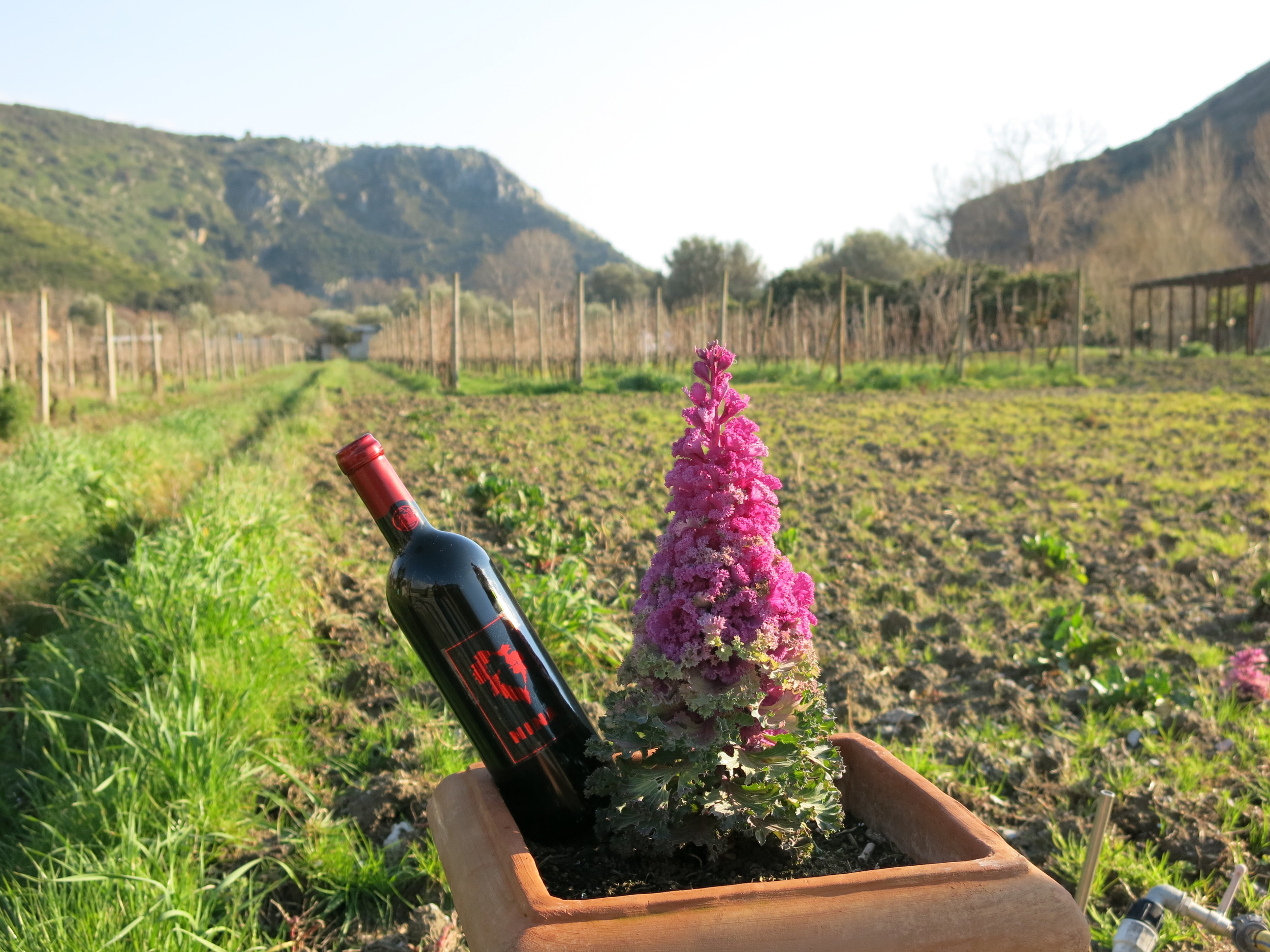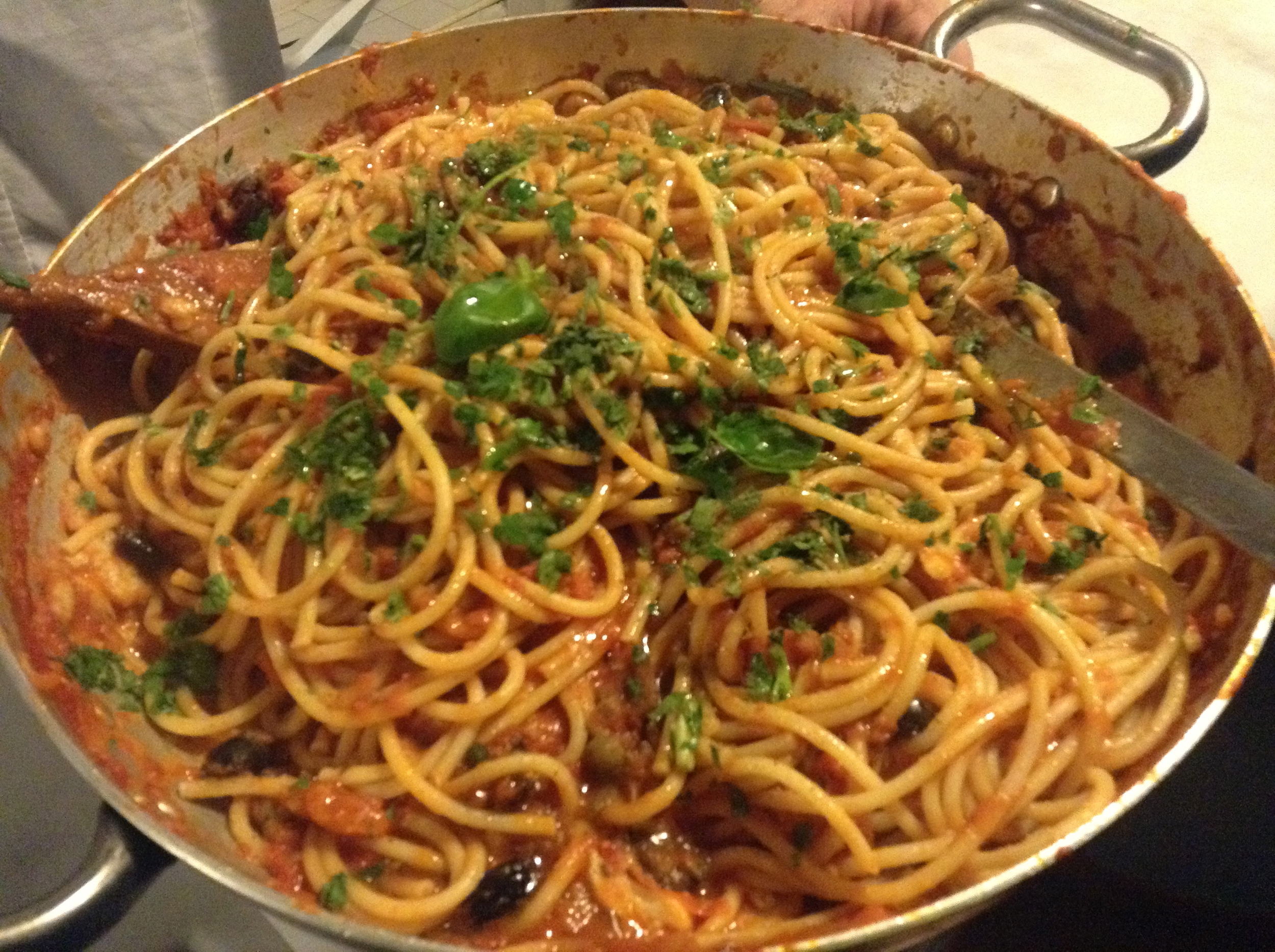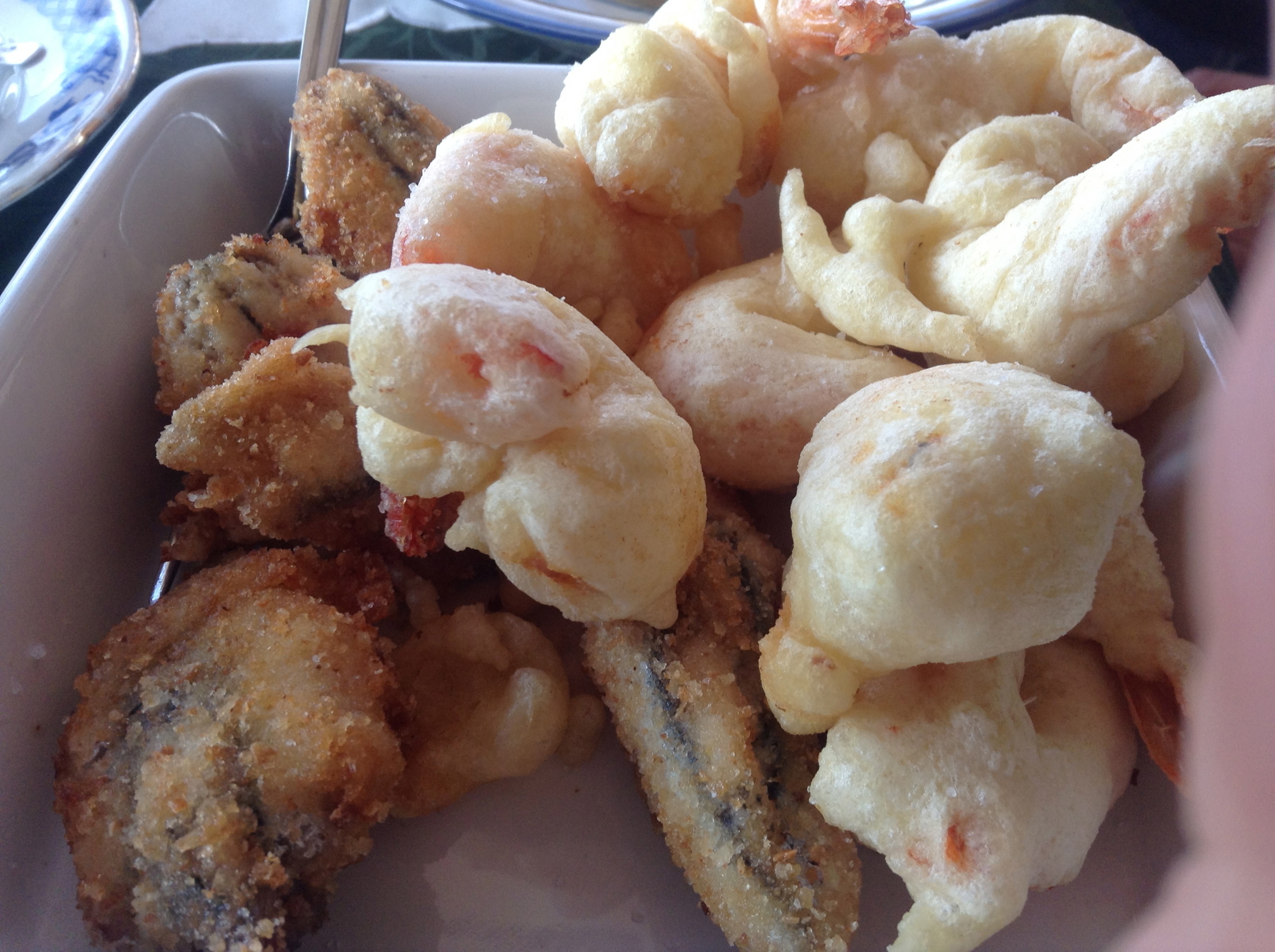In late February I returned to Italy to continue researching food, wine, and locales for “Touring Through The Flavors of Campania”, a travel itinerary I am developing with Domenico Mazzella (of the B & B Donna Regina) that will launch shortly. The purpose of this program will be to provide intimate guided tours through less visited but spectacular locales in southern Italy. For the traveler who wants something different from Italy, these tours will provide unique guest accommodations and in-depth experiences of the history, culinary and artistic heritages of Caserta, Napoli, Salerno and the Cilento. So I couldn't let the rainy and chilly weather stop me!
My first stop was Franco Pepe’s still-new pizzeria Pepe In Grani in the centro storico of Caiazzo. It occupies a three-story palazzo dating back to 1788. Franco has restored the interior mixing modern design with existing stone archways and walls in a glorious mix of old and new. In the future there will be guest lodging at this locale. From the outdoor dining patio and the balconies there are stunning views of the valley and the surrounding hills. The changing light is part of the experience of its peacefulness, where one can hear singing birds, or watch the sunset.
Franco’s pizza is so special he already has a tremendous following for this new locale (see Franco Pepe reviews).
My friend Roberto Saudella took me for a Sunday drive as the sun finally made an appearance. We stopped at Massaria Trianelli, an agriturismo located just outside of Caiazzo. We had the great fortune to be seated with three of the musicians with Renzo Arbore e L’Orchestra Italiana, which is celebrated and world renowned for its mission to popularize Neapolitan music. As guests of the agriturismo dined in a leisurely manner, this amazing music filled the air.
On Monday, Domenico and I went to Le Campestre in Castel di Sasso. We had lunch with the Lombardi family, Mimmo La Vecchia of Caseificio Casolare, and Sergio and Gina Della Valle of Ristorante Gli Scacchi of Cassertavechia. We continued fine-tuning our project. We had an animated conversation about Campania Felix (the fertile countryside) and everything it has to offer. Nature hikes, mozzarella and formaggi, local wines, olive oils, prosciutto and salumi, and traditional gastronomy are part of its riches.
Next, on our way to the Cilento, we stopped by two well-known producers of bufala mozzarella in Battipaglia; Venula and Granato. We were curious to pair their mozzarella with the Fiano wines of Alfonso Rotolo in Rutino.
Alfonso is a third generation winemaker, humble, dedicated and passionate. His grandfather planted their first grapes, using American rootstock, at the azienda in 1938. Earlier vines were destroyed by the mid 19th century blight, phylloxera. In his day, the Fiano and Aglianico wines were sold only in bulk to friends and private clients. Today’s subsequent generations are Alfonso’s customers. His comment about the art of winemaking, “you only have one chance each year to make it right” reminds me of the balsamic makers of Modena and the precise blending process they go through annually. Both of these artisans invest their time and effort in productions that come to fruition twenty, thirty or forty years later. That is dedication!
That evening in Marina di Pisciotta, a seaside town, we ate freshly caught swordfish (pesce spada). It is rumored that the fisherman who caught the fish has thirty daughters in and around the Cilento.
The following morning we visited B & B Antico Maniero in Centola. Centola, which sits high above Palinuro, translates to “one hundred there”.
It is so named because circa 547 when the Byzantines, under Belisarius, invaded the area, one hundred of Palinuro’s (MOL-PAL) inhabitants fled to the hills. It has a stunning view of the sea.
Fourth generation winemaker Vittorio Stanziola’s land is one of the most beautiful spots in the area. His indigenous Santa Sofia white wine production is so limited that it is only available to the locals, similar to how Alfonso Rotolo’s grandfather distributed wine.
We ate at pizzeria Med Farine Club later in the day.
Domenico made himself at home in the kitchen, expertly preparing a baccala ragu. Purchased earlier that week from a market in Somma Vesuviana famous for its baccala, and rinsed of its salt over several days, I had never tasted baccala so sweet!
That same afternoon we returned to Napoli to be with Domenico’s aunt, Giovanna Raffone. She is a celebrated chef and prepared a menu of alici and gamberetti fritti, pasta with a crema di zucca, and a desert made with the famous Modica chocolate of Sicily. She and Domenicos’s mother, Gabriella, will showcase their Neapolitan culinary knowledge and skills as part of our “Touring Through the Flavors of Campania” program. A wine tasting with Bruno DeConcillis in Posillipo concluded the afternoon. We carry one of his lovely wines Bacioilcielo (this means “kiss the sky”) at Spacca Napoli.
More wine! Mimmo and I arrived at Santa Croce di Carinola, Monte Massico and the land of Falerno. We met with Nicola Trabucco, a well-respected oenologist and agronomist. Falerno, produced on the slopes of Monte Massico, is considered the oldest and most prized wine of the Roman Empire.
According to Nicola, Roman nobility considered Monte Massico “the finest of all spots” to reside and cultivate wine, olive oil, honey and other agricultural products. The Appian Way, the world’s first highway (Rome to Brindisi), runs through the area. Volcanic soil, thermal waters, brilliant light and sea breezes have all contributed to Falerno’s magnificence. Nicola’s mission is to live and work“with the same spirit as a gardener, who has no intention of altering the natural disorder of his garden which the plants naturally recreate on their own, but rather (he) spares no effort in teaching and educating (the plants) to learn a beneficent and respectful spirit of peaceful coexistence among themselves.” To date there are twenty small estate producers in the area. Half are under Nicola Trabuco’s guidance.
One of my favorite experiences is to spend a lazy Sunday afternoon at Le Campestre.
I arrived late, but luckily there was still zuppa di fagiole, vedure, agnello, and casavecchia. By sundown, I was back with Franco at his pizzeria. I rolled more pagnotti (doughballs) under Franco’s watch than I could count. I slept through my last day in Napoli on the balcony at Donna Regina. That evening I had a meeting with Fabio Sdino, producer of an amaro (digestivo). I want to bring his product to America. Amaro del Vesuvio dates back to the 18th century. In 1737 it was written that the Prime Minister of Naples, Charles of Bourbon, appreciative of its digestive qualities, would often receive this amaro as a gift from the Sdino family. My first taste of this amaro was years ago at the celebrated Ristorante Europeo Mattozzi.
I concluded my stay with Antonio Starita, over pizza and conversation. It was a fitting end to this journey. We focused on chilled reds, pizza della campagna and pizza napoletana. As my understanding of impasto (the dough) has evolved, I am beginning to understand its science, and can ask more educated questions. I am becoming familiar with various leavening agents (cricito, biga, poolish, lievito madre, lievito di birra), their nuances and their influence on the pizza making/bread making process. I was once told there were two roads; one for the baker, one for the pizzaiuolo. Sometimes they share the same lane. Codified techniques or not, both are in search of a perfect dough that will showcase their respective creativity and tradition. In the words of Antimo Caputo: “At the end, as always, what is most important is not the name we give to the pizza, but what comes out from the oven.”




















